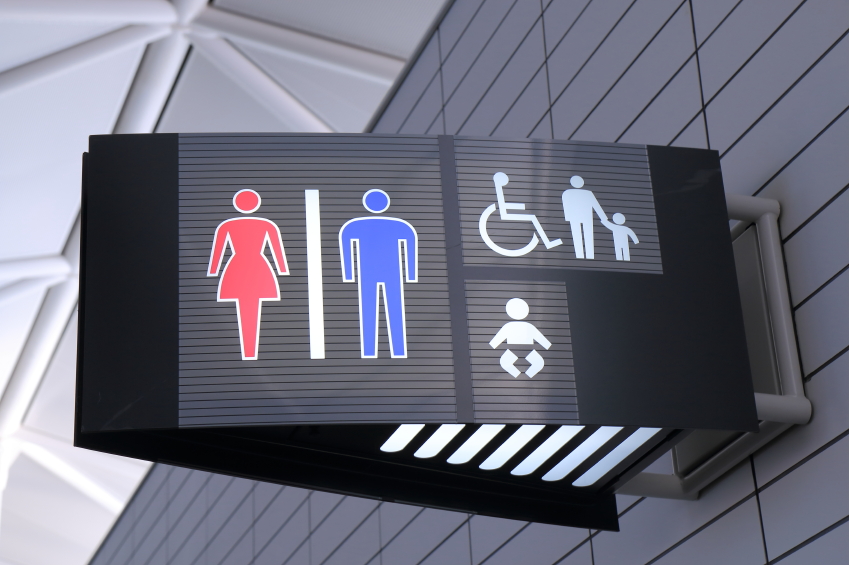
|
Are you providing sufficient toilet facilities for your workers? And are your restroom break policies in line with OSHA’s requirements? Keep reading to find out.
Toilet Access and Worker Health
Sometimes, people can “hold it,” but it’s not healthy to make a habit of doing so. Workers who don’t have access to the toilet when they need it have more urinary tract infections (UTIs); frequent UTIs can lead to kidney damage. In pregnant women, UTIs are associated with low birth-weight babies. Workers who don’t defecate when they need to can suffer constipation, abdominal pain, diverticuli, and hemorrhoids.
Industrial Hygiene Essentials for Protecting Workers and Ensuring Legal Compliance. This on-demand webinar will teach you how to minimize industrial hygiene risks in your workplace today! Click here to purchase!
How Many Toilets Does It Take …?
OSHA’s general industry requirements for the provision of toilet facilities are found in 29 CFR 1910.141(c). OSHA has defined “enough toilets” quite specifically, stating that “toilet facilities, in toilet rooms separate for each sex, shall be provided in all places of employment in accordance with table J-1 of this section. The number of facilities to be provided for each sex shall be based on the number of employees of that sex for whom the facilities are furnished.”
Table J-1 is reproduced below. Remember, these requirements are gender-specific—if you have one female and one male employee, you must provide two toilets if the facilities are gender-segregated. If the toilet rooms are designed for use by no more than one person at a time, can be locked from the inside, and contain at least one water closet, you can designate the facility as “unisex” and need not provide separate toilet rooms for each gender.
| Number of employees | Minimum number of water closets |
| 1 to 15 | 1 |
| 16 to 35 | 2 |
| 36 to 55 | 3 |
| 56 to 80 | 4 |
| 81 to 110 | 5 |
| 111 to 150 | 6 |
| Over 150 | Provide one additional toilet for each 40 employees |
Industrial Hygiene: The Fundamental Building Blocks for Improving Your EHS Program. Don’t miss this in-depth webinar covering the basics of managing industrial hygiene. Our presenter will teach you how to identify in-house or outsourced solutions to your industrial hygiene challenges. Click here to purchase this on-demand webinar today!
Can You Restrict Toilet Use?
Employers and employees frequently disagree on the subject of when and how often and for how long workers can use toilet facilities. Employers often argue that workers abuse their toilet privileges, malingering in the toilet facilities for unreasonable lengths of time. Employees often argue that policies restricting their access to and use of the toilet are unreasonable, unhealthy, and fail to take into account the varying needs of specific workers. OSHA tends to weigh in on the side of the workers.
OSHA has stated that its sanitation standard “is intended to ensure that employers provide employees with sanitary and available toilet facilities, so that employees will not suffer the adverse health effects that can result if toilets are not available when employees need them.” OSHA recognizes that individual needs can vary greatly: Pregnant women, women with stress incontinence, and men with prostatic hypertrophy, for example, need to urinate more frequently. Menstruating women, workers with irritable bowel syndrome, or workers with ostomy bags may require more time to complete toileting activities. Even workers who ordinarily do not need more frequent toilet breaks may find that they are affected by new medications, environmental factors such as cold, or by high fluid intake.
The most basic meaning of “provide,” OSHA has stated, is “make available.” When employees are not allowed to use toilet facilities for extended periods, OSHA determines that those toilets have not been made “available” to employees. Although the agency makes compliance determinations about restroom access policies on a case-by-case basis, it is best not to overly restrict workers’ access to restroom facilities.
Tomorrow, we’ll look at what you need to do when workers don’t have access to permanent on-site restroom facilities.
